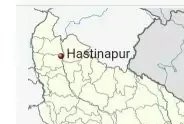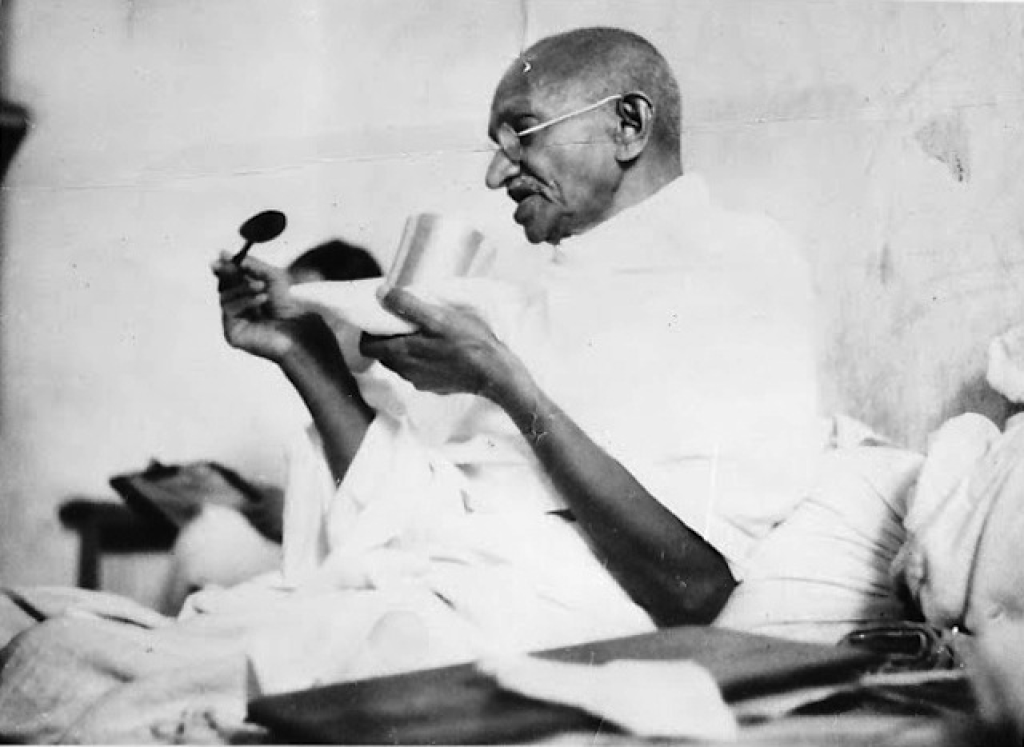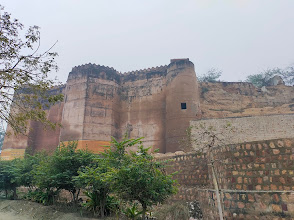HASTINAPUR-THE CAPITAL
SARASIJ MAJUMDER
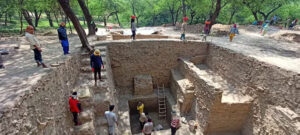
According to the Puranas and Mahabharata, HASTI was an influential king of the ancient dynasty, which later was identified as “KURU” dynasty, and he founded this city and hence Hastinapur was named after him.
It had nothing to do with ‘ELEPHANTS’.
During the Mahabharata era, this city was the capital of the Kuru dynasty.
Most of the important activities recorded in the EPIC ‘Mahabharata’ took place in and around this city.
GEOGRAPHICAL LOCATION:
The ancient city of Hastinapur lies in Uttar Pradesh, at a distance of about 40 km from Meerut & 90 km from Delhi. National Highway 119 just passes nearby. It is under Meerut District Jurisdiction.
By car, it doesn’t take more than three hours.
The geographical location of Hastinapur is in the Doab region between the Ganges and Yamuna rivers, so its strategic and cultural importance was immense. According to archaeological research, this region is home to many ancient civilizations. Hastinapur is presently located near the bank of the Ganges river.
During Mahabharat era Hastinapur was more on the western banks of river Ganga while Kurukshetra was near eastern bank of river Yamuna.
In Harivansh, the appendix to Mahabharata, states that Ganga river changed its course and destroyed Hastinapur at the time of Janamejay, great grandson of Arjuna and he therefore had to move his capital near KOUSHAMBI for the Kuru kingdom.
Today the erstwhile Hastinapur likely to be located far away from the banks of Ganga somewhere between Western flanks Muzaffarnagar and Meerut in UP.
Kurukshetra would be on West side of Yamuna in present day Haryana near Karnal. Yamuna that flowed on the western side of Kurukshetra at the time of Mahabharata has moved to its eastern flank now
ARCHEOLOGY:
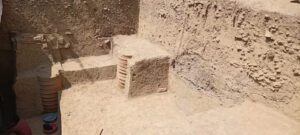
Early Excavations (1950s): These excavations, led by B.B. Lal, were crucial for understanding the city’s structure and its connection to the Mahabharata.
Recent Excavations (2021-2023): Further excavation and conservation work by the ASI have continued to uncover important artifacts and shed light on the site’s history. BLOGGER visited the Excavation Site during this period.
In 1950–52, excavations conducted by the then Director of the Archaeological Survey of India, B. B. Lal, revealed a surprising historical layer at Hastinapur. It was understood that human settlements had developed here since ancient times. Dr. Lal also found some striking similarities with the events of the Mahabharata in his excavations. His excavations found Five Important Cultural Layers: –
- Ochre Coloured Pottery Culture (2000–1500 BC): Evidence of the Early Bronze Age. Hand-made ochre coloured vessels are characteristic of this layer.
- Painted Grey Ware Culture (PGW, 1200–800 BC): Geometric designs are seen on the pottery of this layer painted with ink on a grey surface. According to B. B. Lal, the people of this layer could be the Kuru dynasty described in the Mahabharata.
- Northern Black Polished Ware Culture (NBPW, 700–200 BCE): Black-glazed vessels, metal coins, and brickwork demonstrate the advanced urban civilization of the Mauryan and post-Mauryan periods. The city of this period was part of the 16th Mahajanapada.
- Kushan Period (1st–3rd century CE): Terracotta figurines and many structures are found in this layer.
- Gupta to Medieval Period (4th–15th century CE): Coins, building ruins, and other elements are found in this layer.
KEY ARCHAEOLOGICAL FINDINGS:
- Painted Grey Ware (PGW): A distinctive type of pottery, likely associated with early Indo-Aryans and the Mahabharata period, was found at Hastinapur.
- Copper Arrowheads and Antimony Rods: Indicate military activity and the use of copper during this period.
- Stone Objects: May have been used as weights or for other purposes.
- Glass Bangles: Show evidence of trade and craftsmanship.
- Terracotta Animal Figurines, Discs, and Stamps: Offer insights into daily life and beliefs.
- Evidence of a Flood: The city is believed to have been destroyed by a flood, potentially linked to the flood mentioned in the Puranas.
- Sinauli Burial Ground: Excavations near Hastinapur, including a bronze “horse-driven war chariot,” further suggest a link to the Mahabharata period and push back the timeline to around 2000 BCE.
The most significant discovery at Hastinapur was the signature of a massive flood, with thick layers of silt and mud. This indicates that the city was suddenly abandoned due to flooding. It is said in the Mahabharata that a terrible flood of the Ganges engulfed Hastinapur. As a result, the Kuru king shifted the capital to Kaushambi. B. B. Lal says that this archaeological site is consistent with that historical description.
Hastinapur’s archaeological evidence suggests it was an important city during the Mahabharata period (around 900 BCE) with connections to the Painted Grey Ware (PGW) culture, early Indo-Aryans, and possibly the arrival of the Aryans in the area. Excavations have revealed a “new ceramic industry” identified as PGW, along with other artifacts like copper arrowheads, stone objects, and terracotta figurines. The city is also linked to the Great Flood mentioned in the Puranas, and some scholars believe Hastinapur was abandoned after this flood.
MY VISIT: –
When I visited Hastinapur, some excavations were going on in a part of the largest ruins there. An architectural structure has been exposed; the shape of the bricks suggests that it was from the Kushana era.
The history of Hastinapur is mentioned not only in Hindu religious texts, but also in Jain religious texts and history. It is a pilgrimage site of Jainism. It is the birthplace o9f many Tirthankaras and places of penance.
PLACES OF INTEREST –
- Pandeshwar Temple: – Believed to be more than 6500 years old, this temple is dedicated to Lord Shiva & considered to be the place where the Kauravas & Pandavas took education of the Vedas & Puranas.
- Karna Temple: – It is situated near the Pandeshwar Temple on the banks of an old ravine stream of Ganges, it is more than 6000 years old & the Shivling inside is believed to be established by Karna.
- Hastinapur Sanctuary: It is a sprawling forest cover spread over a massive area of about 2073 sq. km spreading across Hastinapur, Bijnor & Sapor.
- Apart from this, there are various Jain Temples like Jambu weep & One Gurdwara.
References:
1) Lal, B.B., “Excavations at Hastinapur and Other Explorations…”, Ancient India, No. 10 (1954)
2) Lal, B.B., “The Earliest Civilization of South Asia”, New Delhi, Aryan Books (1997)
3) Lal, B.B., “Mahabharata and Archaeology”, Indian History and Culture Society (1984)
4) INDIA TODAY.
Images: – ASI, HT |||Photo Credit: Sanjay Kumar/India Today(marked1 &3/6)

